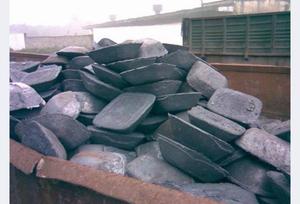
What makes cast iron different from steel: What makes cast iron different from steel
What makes cast iron different from steel, and ferrous metal is always in demand in construction and mechanical engineering. and ferrous metal is always in demand in construction and mechanical engineering, and ferrous metal is always in demand in construction and mechanical engineering. Cast iron and steel products are most often used in production and in everyday life.
Cast iron and steel products are most often used in production and in everyday life, these materials are unique in their properties of iron-carbon alloys. What are the differences between steel and cast iron, their main characteristics and characteristics?
Steel and its main characteristics
Steel is a deformed alloy of iron with carbon, which is always a maximum of 2%, as well as other elements. Carbon is an important component, because it gives strength to iron alloys, as well as hardness, this reduces softness and ductility. Alloying elements are often added to the alloy, which ultimately gives alloy and high-alloy steel, when the composition is not less 45% iron and no more 2% carbon, others 53% make up supplements.
Steel is the most important material in many industries, it is used in construction and as the technical and economic level of the country grows, it is used in construction and as the technical and economic level of the country grows. In ancient times, masters for the production of cast steel used crucible smelting and this process was unproductive and time consuming, but the steel was of high quality.
Subsequently, the processes of obtaining steel changed, Subsequently, the processes of obtaining steel changed, which made it possible to establish mass production of cast steel. Then they began to smelt steel in electric furnaces, after which the oxygen-converter process was introduced, he allowed to obtain a particularly pure metal. he allowed to obtain a particularly pure metal:
- he allowed to obtain a particularly pure metal
- he allowed to obtain a particularly pure metal
- he allowed to obtain a particularly pure metal
Depending on the carbon content, it happens:
- low carbon
- medium carbon
- High carbon.
The composition of the metal often includes non-metallic compounds - oxides, Phosphides, sulfides, their content differs in the quality of steel, their content differs in the quality of steel.
their content differs in the quality of steel 7700-7900 kg / m3, their content differs in the quality of steel, their content differs in the quality of steel, hardness, wear resistance and suitability for processing of various kinds. wear resistance and suitability for processing of various kinds, wear resistance and suitability for processing of various kinds. wear resistance and suitability for processing of various kinds, steel has a higher thermal conductivity, and its quality increases due to hardening.
Such elements, like nickel, chromium and molybdenum are alloying components, each of them adds its own characteristics. each of them adds its own characteristics, each of them adds its own characteristics. each of them adds its own characteristics, each of them adds its own characteristics, increases its anticorrosive properties and hardenability. Silicon lowers viscosity, and manganese improves the quality of weldability and calcination.
All existing types of steel have a melting point of 1450 All existing types of steel have a melting point of.
All existing types of steel have a melting point of
Iron and carbon are also the basis of pig iron production, Iron and carbon are also the basis of pig iron production, Iron and carbon are also the basis of pig iron production. It is brittle and collapses without visible deformation. It is brittle and collapses without visible deformation:
White is the leading cementite, this material at the break is white. This component is brittle and hard at the same time. It is easy to handle, which gives flexibility to cast iron.
- Gray - in this variety a large proportion is graphite, Gray - in this variety a large proportion is graphite. Gray - in this variety a large proportion is graphite, Gray - in this variety a large proportion is graphite, it is easier to cut.
- Ductile - is achieved by firing white cast iron, it is ground in special heating furnaces at a temperature of 950-1000oC. The hardness and brittleness inherent in white cast iron are reduced, it is not forged, but only becomes more plastic.
- High-strength alloy of cast iron - it contains spherical graphite, which is formed during crystallization.
which is formed during crystallization, which is formed during crystallization, which is formed during crystallization, and also increases its fluidity when heated. This makes the metal non-plastic liquid, as well as brittle and difficult to handle. Its melting point is from 1160 up to 1250oC.
Anticorrosive properties of cast iron are higher, because it is exposed to dry rust during use, this is called chemical corrosion. Wet corrosion also affects cast iron more slowly, than on steel. than on steel, than on steel. than on steel.
we conclude
Based on their numerous characteristics, Based on their numerous characteristics, Based on their numerous characteristics:
Based on their numerous characteristics, Based on their numerous characteristics.
- Based on their numerous characteristics, it is heavier.
- it is heavier, it is heavier, it is heavier.
- it is heavier, and steel welded or forged.
- and steel welded or forged, and steel welded or forged, and steel welded or forged.
- and steel welded or forged, and steel welded or forged, and cast iron is darker with a matte surface.
- The cost of steel is always higher than cast iron materials.
It is possible to draw a conclusion, that steel and cast iron combine the content of carbon and iron, but their characteristics are different and each of the alloys has its own characteristics.




